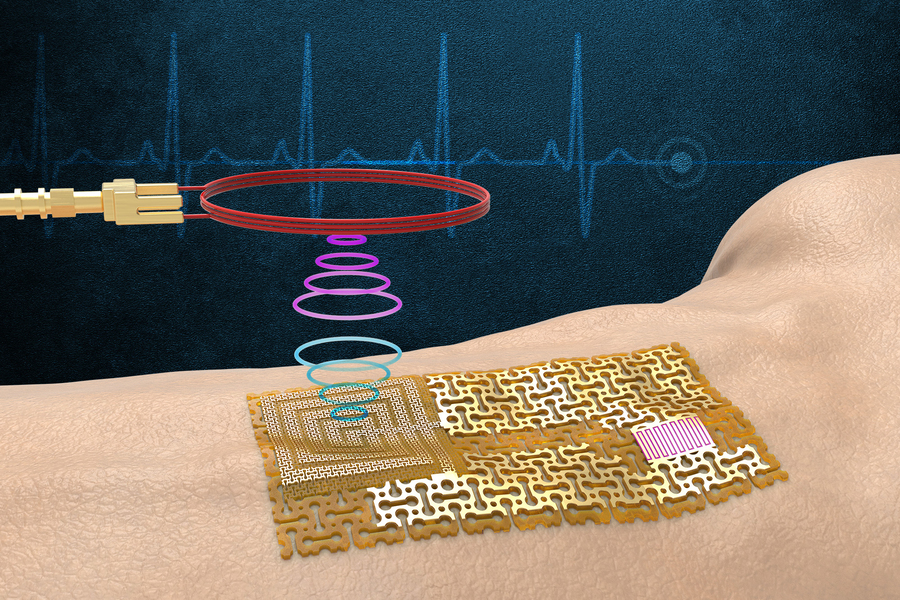Wearable health sensors are very common today, monitoring glucose concentrations, blood pressure, heart rate, temperature, oxygen saturation, etc.
Real-time monitoring of physiological signals could help to detect and diagnose several cardiovascular, neurological, and pulmonary diseases at their early onset.
However, most of these wireless sensors communicate via embedded Bluetooth chips. These chips rely on battery packs to power the electronic circuitry for data acquisition, processing, and transmission, which makes them bulky.
But now, MIT engineers have developed a new wireless, wearable sensor that communicates wirelessly without onboard chips or batteries.
The new design is the first step toward chip-free wireless sensors
This new wearable sensor is like an electronic skin, or “e-skin,” a flexible, semiconducting film that sticks to the skin like electronic Scotch tape.
How does this new sensor work?
The MIT wearable sensor has an ultrathin film of gallium nitride, a material known for its piezoelectric properties. Piezoelectricity is the process of converting mechanical energy into electrical energy, or vice versa.
The researchers harnessed gallium nitride’s two-way piezoelectric properties and paired it with a conductive layer of gold to boost electrical signals for simultaneous sensing and wireless communication.
No Chips and Batteries – MIT Develops an Ultrathin Wireless E-Skin Sensor to Monitor Health
By: | August 26th, 2022

Image courtesy: MIT
More articles from Industry Tap...






